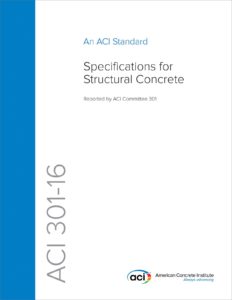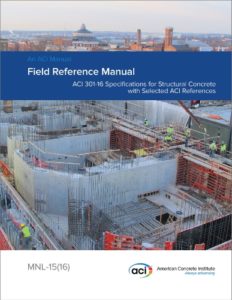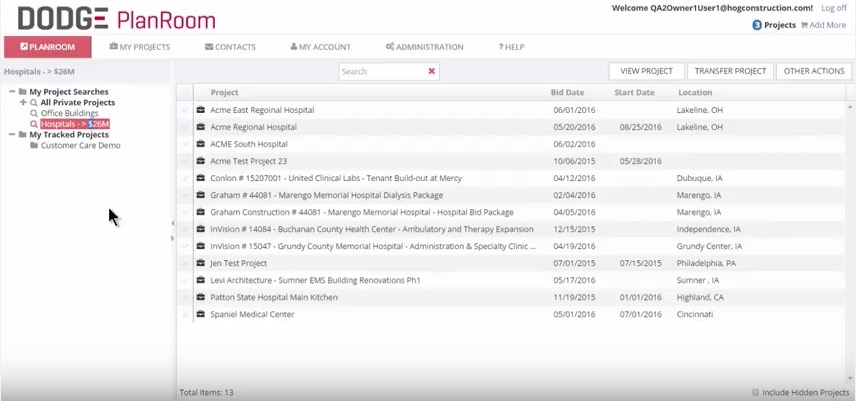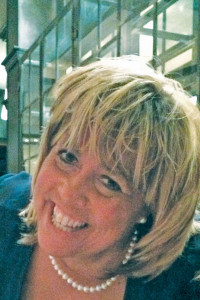CFA ANNOUNCES 2016 TOP SAFETY AWARDS
Mount Vernon, IA Aug 29, 2016 – The Concrete Foundations Association (CFA) – the recognized voice and authority for the residential concrete industry, announced the 2016 Safety Achievement Award recipients at CFA Convention 2016 in Myrtle Beach, SC. on Saturday, July 23, 2016.
The Safety Achievement Awards program seeks to recognize the commitment to safety and risk management among the hundreds of professional cast-in-place contractors found in CFA membership. “Safety remains a top priority in our industry,” said Jim Baty, executive director of the CFA. “This program challenges contractors to demonstrate leadership by documenting their job-site and company-wide safety efforts. Recognizing safety achievements plays a vital role as the industry strives to demonstrate and promote the importance of job-site safety,” said Baty.
The CFA Safety Achievement Award program recognizes three defined contractor categories; that of Residential Foundation Contractor, All Concrete Contractor and Turn Key Contractor. In each category, company size is considered with sub-categories for total work hours of under 100k, 100k to 250k and over 250k work hours. Companies are recognized with awards for Best Overall Safety Achievement, Most Improved Safety Achievement, Zero Lost Time Accident.
Awarded in the category for Best Overall Safety Achievement for 2015 were Custom Concrete Company, Inc. (All Concrete Contractor > 250k work hours), Stephens & Smith Construction Co., Inc., (Turn Key Contractor > 250k work hours), The Bartley Corp. (All Concrete Contractor 100k to 250k work hours), Walrite, LLC. (Residential Foundation Contractor < 100k work hours), Solid Concrete Walls, Inc. (Residential Foundation Contractor 100k to 250k work hours), and Michel Concrete Construction (All Concrete Contractor < 100k work hours).
The recognition for Most Improved Safety was awarded to Stephens & Smith Construction Co., Inc., and Zero Lost Time Accident Awards went to Walrite, LLC and Michel Concrete Construction, Inc.
Along with these major awards given at the 2016 CFA Awards Gala, Executive Director Baty also recognized 2016 Project of the Year Awards and the 2016 Professional Achievement Awards.
ABOUT CONCRETE FOUNDATIONS ASSOCIATION
The Concrete Foundations Association (CFA) is the recognized voice and authority for the residential concrete industry. Originally formed as the Poured Concrete Wall Contractors of America, Inc. (PCWCA), the CFA was formed in 1974 to serve the interests of poured wall contractors. The CFA has members throughout the U.S. and Canada as well as overseas representing all aspects of the cast-in-place industry including construction, design and manufacturing. Member firms are diverse in size and volume as well as business models with many operating across residential, agricultural and commercial markets. For more information, visit www.cfawalls.org or contact CFA at 319-895-6940.
SCHWING AMERICA NAMES NEW LEADERSHIP TEAM
|
St. Paul, MN (August 18, 2016) – Schwing America Inc. (SAI) (http://info.schwing.com/e/83972/2016-08-19/5l42vw/150439240) announced today its new leadership team of Bill Murray and Tom O’Malley following the resignation last week of former CEO, Brian Hazelton. Bill Murray, CFO for the past four years at SAI, has been named as CEO effective immediately. For two years prior to that, Murray held the position of Chief Restructuring Officer and independent Board Member. Over his 30-year business career, Murray has held senior level finance, operating and consulting positions in several companies including divisions of Daimler Chrysler and General Motors. Tom O’Malley has been promoted to Senior Vice President of Sales and Marketing, capping off a career of nearly 20 years at Schwing in various sales and marketing roles. Prior to Schwing, O’Malley had worked for Putzmeister America and Rotec Industries. Both Murray and O’Malley will serve on the Board of Directors of Schwing America. Rounding out the senior leadership team, Lisa Kraft-Kujawa will continue to serve as VP of Human Resources and Administration. Kraft-Kujawa joined Schwing last year after a consulting position with the organization. Joseph Schnittker, Director of Engineering & Design of Schwing Group, based in Herne, Germany will also help guide the company with direct responsibility and co-ordination of the Engineering and Research and Development groups in Herne and the Minnesota facilities. “I am confident in this team’s ability to continue to advance Schwing America as the premium concrete product manufacturer in North America,” said Dr. Gunther Abolins, Managing Director of Schwing Group in Herne, Germany. “They will continue to lead our talented team of senior leaders and dedicated employees to provide the best products and services for our current and future customers.”
### About Schwing America Schwing America is part of the Schwing Group, headquartered in Herne, Germany with manufacturing facilities, as well as sales and service centers, globally. Located in the St. Paul suburb of White Bear Township, MN, Schwing America manufactures industry leading concrete pumps, mixer trucks, reclaimers and genuine parts for sale and distribution in North and Latin America. (http://info.schwing.com/e/83972/2016-08-19/5l42vw/150439240 |
American Concrete Institute Announces New Structural Concrete Specifications
FARMINGTON HILLS, Mich., Aug. 8, 2016 /PRNewswire/ — The American Concrete Institute announces the availability of two important new documents for concrete industry professionals: ACI 301-16 Specifications for Structural Concrete, and the ACI Field Reference Manual.
ACI 301-16 Specifications for Structural Concrete is a reference specification that an architect or engineer can apply to any construction project involving structural concrete by citing it in the project specifications. A mandatory requirements checklist and an optional requirements checklist are provided to assist the architect or engineer in supplementing the provisions of this specification as required or needed by designating or specifying individual project requirements.
The first five sections of the specifications cover general construction requirements for cast-in-place structural concrete and slabs-on-ground. These sections cover materials and proportioning of concrete; reinforcement and prestressing steel; production, placing, finishing, and curing of concrete; formwork performance criteria and construction; treatment of joints; embedded items; repair of surface defects; and finishing of formed and unformed surfaces. Provisions governing testing, evaluation, and acceptance of concrete as well as acceptance of the structures are included. The remaining sections are devoted to architectural concrete, lightweight concrete mass concrete, post-tensioned concrete, shrinkage-compensating concrete, industrial floor slabs, tilt-up construction, precast structural concrete, and precast architectural concrete.
“There are several major updates to the 2016 document from previous version published in 2010, including more contractor-friendly language, removal of default requirements for slump, and provisions on alkali silica reactivity,” states Michelle Wilson, Chair, ACI Committee 301, Specifications for Structural Concrete. “The specifications have been made clearer for the user by removing wording that is confusing or subject to interpretation.”
ACI 301-16 complements the completely reorganized ACI 318-14 Building Code Requirements for Structural Concrete. This enables the designer to use the 301 specifications to complement the design. The specifications are totally inclusive of virtually all forms of structural concrete that are utilized in the building construction industry.
The ACI Field Reference Manual is a compilation of documents including ACI 301-16 Specifications for Structural Concrete and additional ACI documents on measuring, mixing, transporting, and placing concrete; concrete pumping methods; hot- and cold-weather concreting; consolidation; and concrete formwork. ACI 301‑16 requires that contractors keep a copy of the ACI Field Reference Manual in the field office of any project where ACI 301 is specified. The following documents are contained in the ACI Field Reference Manual:
301-16 Specifications for Structural Concrete
117-10(15) Specifications for Tolerances for Concrete Construction and Materials
117.1R-14 Guide for Tolerance Compatibility in Concrete Construction
211.5R-14 Guide for Submittal of Concrete Proportions
224.1R-07 Causes, Evaluation and Repair of Cracks in Concrete Structures
302.1R-15 Guide for Concrete Floor and Slab Construction
302.2R-06 Guide for Concrete Slabs that Receive Moisture-Sensitive Flooring
303R-12 Guide to Cast-in-Place Architectural Concrete Practice
304R-00(09) Guide for Measuring, Mixing, Transporting, and Placing Concrete
304.2R-96(08) Placing Concrete by Pumping Methods
304.4R-95(08) Placing Concrete with Belt Conveyors
305R-10 Guide to Hot Weather Concreting
305.1-14 Specification for Hot Weather Concreting
306R-10 Guide to Cold Weather Concreting
306.1-90(02) Standard Specification for Cold Weather Concreting
308R-16 Guide to External Curing of Concrete
308.1-11 Specification for Curing Concrete
309R-05 Guide for Consolidation of Concrete
347R-14 Guide to Formwork for Concrete
347.3R-13 Guide to Formed Concrete Surfaces
423.7-14 Specification for Unbonded Single-Strand Tendons
ITG-7-09 Specification for Tolerances for Precast Concrete
Learn more about the new ACI 301-16 by viewing this video.
ACI 301-16 is also included in the new 2016 edition of the Concrete Construction Special Inspector reference package. The American Concrete Institute also has ACI 301-16 online learning opportunities:
ACI 301-16 Specifications for Structural Concrete (Part 1)
ACI 301-16 Specifications for Structural Concrete (Part 2)
ACI 301-16 Specifications for Structural Concrete (Part 3)
Learn more and purchase both documents at www.concrete.org or by calling 248-848-3700. Join the conversation by following #ACI301.
For more information, contact:
Julie Webb
Marketing Communications Specialist
p +1.248.848.3148
American Concrete Institute | Always advancing
www.concrete.org
Always advancing – The American Concrete Institute is a leading authority and resource worldwide for the development and distribution of consensus-based standards and technical resources, educational programs and certifications for individuals and organizations involved in concrete design, construction and materials, who share a commitment to pursuing the best use of concrete. ACI’s inclusive, individual member-driven structure and valuable, cost-effective benefits result in an essential organization that invites partnerships and welcomes all concrete professionals who wish to be a part of a respected, connected social group that provides an opportunity for professional growth, networking, and enjoyment.
Dodge Data & Analytics Launches PlanRoom Service for Construction Contractor and Subcontractor Community

Free service provides secure location for users to share and access information from bid phase through project completion
NEW YORK, August 3, 2016 – Dodge Data & Analytics has launched Dodge PlanRoom, an online service for contractors and subcontractors to store, manage, and share plans, specifications, and other construction documentation. Dodge PlanRoom is designed to support construction-specific workflows such as evaluating potential projects by quickly reviewing linked plans, sections and elevations. More information and a free version of the service are available at http://www.construction.com/dodge/planroom.asp.
View a video demonstration of this software at www.youtube.com/watch?v=63llwft8xso
Through optional integration with Dodge Global Network, the largest, most comprehensive source of information on construction projects in North America, contractors can quickly search and view projects to find the ones most suitable for them. Users can also add their own projects or participate in private projects they are invited to by owners and other contractors.
“Dodge data is a crown jewel in the AEC technology landscape and we’re on a mission to unlock the value in our data for all industry participants,” said Mike Petrullo, CEO of Dodge Data & Analytics. “PlanRoom is a great example of this by making Dodge data seamlessly available for contractors and trades to find and win new work, without the need for expensive, complicated packages. We also see tremendous potential for Dodge data to benefit other AEC processes and workflow tools, from both Dodge and other technology providers.”
By helping to make relevant project documentation available in a single, secure repository, PlanRoom allows the whole project team – general contractors, subcontractors and trades, manufacturers, distributors and service providers – to collaborate throughout the entire project lifecycle. Simplified project syncing means that the team can avoid the headaches and delays caused by working with out-of-date information. And version control ensures a document record that allows contractors to track history and pinpoint plan changes when necessary.
“Viewing project information and documents with Dodge PlanRoom is easier and faster than any other product we have used,” said Matthew J. Brennan, Chief Executive Officer, Loveland Excavating and Paving, Inc., in Fairfield, Ohio.
PlanRoom is available in multiple tiers, all of which offer access to unlimited users on a project. The basic level is available free and comes with storage of up to five projects at a time. Subsequent tiers offer increased storage for low monthly fees.
For more information on PlanRoom and to sign up, visit http://www.construction.com/dodge/planroom.asp.
# # #
About Dodge Data & Analytics: Dodge Data & Analytics is a technology-driven construction project data, analytics and insights provider. Dodge provides trusted market intelligence that helps construction professionals grow their business, and is redefining and recreating the business tools and processes on which the industry relies. Dodge is creating an integrated platform that unifies and simplifies the design, bid and build process, bringing data on people, projects and products into a single hub for the entire industry, from building product manufacturers to contractors and specialty trades to architects and engineers. The company’s products include Dodge Global Network, Dodge SpecShare®, Dodge BuildShare®, Dodge MarketShare™, and the ConstructionPoints and Sweets family of products. To learn more, visit www.construction.com.
Board Adopts CFA Newsletter Sponsorship Program
The CFA decided at its board meeting on Friday, October 17, 2003, in Denver, Colorado to proceed with a newsletter sponsorship program. Management has received several requests to purchase additional copies of the popular publication for distribution to customers, builders, building code officials, and within their own companies and this program makes that possible.
The newsletter has expanded and improved from its origins of a four-page, black and white publication to a full color 28-32 page magazine published six times annually. It features news, stories, events, and other information of interest and value to hose in the poured wall industry.
CFA members can purchase additional subscription for $20.00 per year (six issues). The CFA agrees to keep the names on file and will send the subscriptions.
“Build with Strength” to Provide Concrete Information and Resources for Seattle, WA Design / Build and Construction Markets
Seattle, WA – Build with Strength, a coalition of the National Ready Mixed Concrete Association (NRMCA), will be launching new resources, training programs, and educational content in Seattle, Washington as part of increased efforts to inform the design / build and construction communities about the advantages of concrete construction in the low- to mid-rise residential sector, and in general.
The launch of the Seattle programs comes on the heels of a legislative victory in February that saw the Washington State Legislature reject a bill that would have granted tax breaks for the use of a product known as cross laminated timber (CLT). In an oped for The Tacoma News Tribune, Allen Hamblen, president of CalPortland Co., a building materials and construction solutions provider to the Western United States and Canada since 1891, and the former chairman of the Board of Directors of NRMCA, argued that subsidizing CLT’s as a construction material is not only dangerous because “wood rots, molds and, worst of all, it burns,” but because architects will be incentivized to prioritize the price differential over safety. As part of the “Build with Strength” launch, multi-media content will be shared throughout the month that highlight the strength and durability of concrete and concrete products, especially when compared to wood construction.
“Even in the timber industry’s backyard, it’s critically-important for the design / build community to know why building with strength is the only way to assure long lasting, safe and cost effective construction,” said Kevin Lawlor of Build With Strength. “With concrete, the advantages are clear as day: durability and strength cannot be substituted with wood simply because wood is abundant and cheap.”
Last year, Washington State experienced the largest wildfire season in its history, claiming 176 homes and burning more than a million acres. Yet buildings constructed with concrete, like Okanogan County resident John Belles’ home, were left standing after the inferno tore through the countryside. Build with Strength hopes to extend this type of safety and durability into the booming low- to mid-rise residential market.
“As Washington and the entire Pacific Northwest enter wildfire season, the onus is on those with the means to make a difference to ensure Washington State’s buildings are constructed with strong and resilient materials,” continued Lawlor.
Visit www.buildwithstrength.com to learn about concrete construction, its ease of use, creative applications, safety and strength and watch our Build with Strength video.
Schwing America’s Concrete Pumps and Truck Mixers Now Use Valspar Coating Technology
Valspar Duraspar Passes Durability Test; Surpasses Finish and Application Test
MINNEAPOLIS, May 31, 2016 – Schwing America has converted its paint coating system to the new Valspar Duraspar® Industrial Performance (IP) coatings and intermix system from The Valspar Corporation, a global coatings leader. Headquartered in White Bear Lake, Minnesota, Schwing America is the first production facility to use the fully commercialized Valspar Intermix system.
The 400,000 square-foot manufacturing plant builds concrete pumps and truck mixers that are distributed in North America. When Schwing decided to change coatings, the team conducted a rigorous selection process, starting with coating durability tests from five different manufacturers. Mark Moschkau, Schwing’s director of operations, reported that Valspar’s Duraspar coating received the highest performance levels in the test. In addition, Moschkau said, “Valspar’s coating sprayed on easily and provided effective edge coverage, so minimal touchup was required. The coverage, gloss and depth was excellent. Our units look great and have a sheen that mirrors a plastic coating. We’re very, very pleased.”
Jason Bolz, Valspar Global Product Director, described how the Duraspar IP coating has been specifically formulated for the needs of the industrial marketplace. “By combining the aesthetics of automotive paints with the rugged performance of industrial coatings, Duraspar IP is designed to withstand the daily rigors of harsh outdoor operating environments,” said Bolz. “The coating not only looks great, but delivers better edge coverage and corrosion protection. And, for customers looking for maximum flexibility in color mixing, they can literally paint the ‘rainbow’ with our paint system by mixing any standard or custom color onsite in a range of volumes.”
Moschkau described the challenge to find a coating that can stand up to the harshest construction environments. “Our pumps and mixers are exposed to weather, chemicals, dust, dirt and flying debris and a daily high-pressure wash to keep the equipment clean and that really puts a coating to the test,” he said. “Not only does the Duraspar IP system maintain its durability, it’s also a beautiful paint. That was one big reason why we switched to Valspar. Our equipment looks fantastic, and our customers immediately saw the difference when we debuted the new coating at World of Concrete this year.”
Schwing is currently installing a second Valspar Duraspar intermix system at the Concrete Pump Repair (CPR), a Schwing company in North Branch, Minnesota, that repaints, repairs, refurbishes, retrucks and resells concrete pumps.
###
About Valspar: If it matters, we’re on it.®
Valspar is a global leader in the coatings industry providing customers with innovative, high-quality products and value-added services. Our 11,000 employees worldwide deliver advanced coatings solutions with best-in-class appearance, performance, protection and sustainability to customers in more than 100 countries. Valspar offers a broad range of superior coatings products for the consumer market, and highly-engineered solutions for the construction, industrial, packaging and transportation markets. Founded in 1806, Valspar is headquartered in Minneapolis. Valspar’s reported net sales in fiscal 2015 were $4.4 billion and its shares are traded on the New York Stock Exchange (symbol: VAL). For more information, visit www.valspar.com and follow @valspar on Twitter.
About Schwing America
Schwing America is part of the Schwing Group, headquartered in Germany with plants as well as sales and service centers in several countries. Located in St. Paul, Minn., Schwing America manufactures industry leading concrete pumps, truck mixers, reclaimers and genuine parts for distribution in North and Latin America. www.schwing.com
Are You Sure You’re Training the Right Things?
Not long ago a training consultant got a call from a sales manager who said, “We need sales training!” The consultant answered, “Are you sure?”
The caller explained that some of their customer service reps were doing four times the volume of others. It had to be because they were better salespeople … right? So, they needed sales training!
The consultant agreed to help, but insisted on observing the company’s top performers to get a better understanding of what sales techniques they were using.
As it turned out, the top producers weren’t better salespeople at all, but rather had developed a more effective method for processing customer transactions. Once the consultant recognized that, it was easy to document their techniques and build short training interactions around them. The result was an almost instant uptick in sales across their entire customer service rep population.
The message? To get the results you want, you need to understand the reality of your situation. Here are some non-obvious, commonsense steps to help you do that and avoid wasting time and resources.
Step One: Get Real Information from the Right People
A modified version of DACUM (which stands for Developing a Curriculum) can be effectively used in situations like that one. DACUM, which was created by educators to design courses, analyzes what people really do and what they need to learn.
In stark contrast to getting only the leadership team or training department heads in a room, training designers should invite the “boots on the ground.” These are the top performers, the gurus, and the go-to people everyone in the organization knows and relies on. A facilitator leverages a process by which they can extrapolate all that delicious institutional or “tribal” knowledge that exists only in their heads.
Diversity of perspective is key here, so don’t be afraid to have a mix of people. Here’s a sample group:
- The new person who really gets it! – That person on your team who’s been in a role for six months to a year and really seems to get it. He or she provides a fresh perspective.
- The go-to person who has been there forever! – He or she can be described as having forgotten more about the job than most people will ever learn. They provide historical knowledge about how the role has changed over the years.
- An adjacent collaborator role – Don’t be afraid to bring in someone who is not in the role, but “close” to it. This individual can provide an outsider’s perspective and bring knowledge and experience to a different role.
- Key stakeholders – This group is essential because they need the results. They are often your champions who need to understand the process and often support your budget.
Step Two: Create an Occupational Definition – Prime their Minds!
Get everyone in the room focused on the role and get discussions about leadership, work ethic and good communication out of the way. You can use a simple quadrant matrix to document:
- Reporting lines – Who does the role report to up, down and laterally.
- Critical knowledge and skills – What specific skills are essential to doing the job well?
- “Nice to have” abilities and traits – What type of person tends to perform well?
- Learned but wasn’t taught – What were those “a-ha moments” your group had on the job?
Step Three: Define the Body of Knowledge for Peak Performance – The Meat and Potatoes!
A Duty/Task Matrix can be used to define the body of knowledge necessary to perform in the role. You only need some big post-it notes and sharpies. Get the information on the wall so everyone can see it. Put duties down the left, and tasks going across left to right.
Here are the definitions and some examples:
- Duties – This is a something that is top-of-mind for the role. It doesn’t have a beginning or an end. It is ever- present while on the job and usually ends in –ing. Some examples:
- Restaurant Manager. Duty: Maintaining food safety
- Automotive Maintenance Manager. Duty: Selling products and services
- Tasks – These are processes or procedures that have a beginning and end. They usually can have a metric associated with them. These roles fulfill duties by repeatedly completing a series of tasks, usually four or more. A defined task requires an object, verb and qualifier. Some examples:
- Restaurant Manager. Task: Wash hands properly
- Automotive Maintenance Manager. Task: Write a customer-facing estimate
When you identify all the duties and the tasks required to fulfill a role, you’ve documented the entire body of knowledge used by your experts in the room. You’ve also just blown your LT away, because they had “no idea!” your people did all this stuff!
Step Four: Understand the Gaps and Criticality
Your Duty/Task Matrix stands before you and now you need to know where the information is and what tasks have the highest impact on performance. Here are steps to follow:
- Draft a Gap Analysis – Go task by task. Where is it documented how to perform this task? In HR? Marketing? Sales? Ops? Or is it in one of your expert’s head? Has it been passed down over time? If it’s the latter, it’s a gap!
- Consider criticality – Everything in your Duty/Task Matrix is important … but what’s most critical? Use a simple rubric and define the impact to the business, performance, individual or team upon failure. Ask the question: If the worker fails to perform this task, does anyone notice? Does it create some rework—possibly a lot? Will you lose a customer? Will someone get hurt?
Step Five: Build Your Plan
You now have all the information you need to build your plan. You know what the role looks like, contained in your Occupational Definition. You know the body of knowledge that needs to be learned, as described in your Duty/Task Matrix. You know what exists and what doesn’t, laid out in your Gap Analysis. And you know what information is critical to performance, as summarized in your Criticality Analysis.
You can build your Learning Maps for the role, from beginner to expert. You can start to design and develop training around the gaps that really impacts performance. You can map these duties and tasks to competencies and leverage them in cross-team training interactions, and make decisions on the right method for delivery
Now you are armed, much like a marketing department, with an analysis of your customer base and potential for results based on empirical data and not simply feelings. Now you can go to your LT with a plan that justifies a budget and will deliver results. Oh, and you’ve done it all in two days. Good luck!
ABOUT THE AUTHOR
Dan Black is the Chief Learning Strategist at Tortal Training. He specializes in GSD – “getting stuff done” and is recognized in the industry as a “pleasantly disruptive force” that challenges conventional thinking on training and talent development. Contact Dan at dan.black@tortal.net
Are You Ready for the URS?
Businesses big and small have vastly different goals and needs – that’s no revelation. However, nearly every company, no matter how big, where they are, or what they sell, agrees on this point: Simplifying and streamlining business practices helps everyone.
Such is the intent of the Federal Motor Carrier Safety Administration’s (FMCSA) Unified Registration System (URS), which is being rolled out in phases.
Of course, as can be the case with any federal regulation, the fine details can get a little confusing (as can the process of getting into compliance). Here are the essentials for navigating the URS.
What is it?
Up to now, all entities regulated by the FMCSA have made use of various forms and processes scattered across platforms both real-world and virtual. The URS will merge all of those into one single online registration system – what the agency is calling a “smart form.”
The intent is to make registrations a simpler, one-stop-shop process, while at the same time increase efficiency, reduce paperwork, and allow the FMCSA to keep more accurate records and better enforce infractions.
The FMCSA estimates that, over a 10-year period, the system will help the industry reap a total savings of $9 million. However, the agency also expects there to be a learning curve, as 16 percent of new registrations are currently submitted on paper.
Who Does the URS Apply to?
Once implementation is complete, the system will handle all record updates and new registration applications for all the entities that the FMCSA oversees. That includes: interstate carriers, brokers, freight forwarders, intermodal equipment providers, cargo tank manufacturing and repair facilities and companies required to hold hazardous materials safety permits.
Mexican-domiciled long-haul carriers are the only entities exempt from the rule.
Know the Dates – and What you Need to do
The FMCSA published its final rule in the Federal Register on October 21, 2015, and a phased launch of the system began on December 12.
The first phase applied to new entrants: As of December 12, all new applicants must go through the URS online system to acquire a USDOT number and Operating Authority. However, any updates required for those new registrations must be filed through existing channels – not the URS.
The next phase begins September 30. As of that date:
- The FMCSA will no longer accept applications by mail or fax. All businesses subject to the rule must use an FMCSA portal account. That can be set up by going here: http://www.fmcsa.dot.gov/urs.
- MC, FF and MX numbers will no longer be issued. USDOT numbers will become an entity’s sole identifier. Companies that currently don’t have one will be issued one before September 30.
- All new private hazardous materials (HM) and exempt for-hire Carriers must provide evidence of financial responsibility (using form MCS-90).
- All new applicants must file a form BOC-3, designation of a process agent.
- A new fee schedule will take effect.
Confused? Have questions? Need assistance with any of the above?
As always, Foley is here to help. We can create a portal account for you, file your BOC-3, and provide guidance on how to prove financial responsibility. For more information, visit www.foleyservices.com or call us at (800) 253-5506.
About the Author
Christa Krajewski has over eight years experience in DOT regulatory issues and is Foley’s resident compliance expert. In her role at Foley, she works closely with customers to ensure they meet federal drug and alcohol testing requirements. She also provides post-audit support, helping carriers get back in compliance and prepare corrective action plans when needed.
Controlling Your Risks in the Ever-Changing Insurance Marketplace
Over the last few decades, the considerations involved in managing a company’s risks have drastically changed.
Business risks that used to be inherent are much different today and, as a result, mitigation techniques are vastly different than those used in the ‘80s, ‘90s or even the ‘00s. As many business owners know, when it comes to the construction industry, the route to success is never an easy one. That is why it is crucial to understand the emerging risks that have the potential to considerably impact a business’ bottom-line. Factors that contribute to the increased growth of emerging risks include new economic, strategic, financial, operational, sales & marketing, technological, and even more recently, personnel developments.
This two part article, featured in this and the next CFA Concrete Facts magazine, will focus on the particular business risks that CFA members have identified in a recent Heat Map survey orchestrated by CFA 360 risk management program. The survey identified the CFA members’ top three business risks as: market competition, injury to a worker, and hiring. CFA respondents universally believe that these top three risks also have the most significant financial impact on their organizations over the coming years as well as present the most frequently faced risks. An interesting vital key point about the top three risks is that they are absolutely intertwined and the failure to collectively consider them will leave businesses unprotected. Simply stated … good hiring practices lead to workplace safety and quality work product, which help all businesses successfully compete in the market place and keep profits on the balance sheet.
The leadership of the CFA has addressed emerging risks for the association with its formation of the CFA 360 risk management program. Several years ago, the CFA leadership identified that controlling a business’s risk exposure to construction risks stretches far beyond what an insurance policy covers and requires that your risk management partner, your broker, must have evolved into having a deep industry expertise outside the standard scope of placing insurance. That partner must have the ability to proactively identify and evaluate business risks, and develop strategic solutions to protect your balance sheet.
Contractor Market Competition
CFA members identify market competition as their number one risk, and state that it consumes the greatest portion of company time and resources. This is not surprising based on the effects that the long, deep recession has had on the residential construction industry. Nearly eight years later, the residential construction sector is finally coming out on the other side, but still nowhere near the levels it was prior to the recession. Surprisingly enough, experience has taught us that more contractors go out of business during a recovery than during a recession. Margins remain very low as contractors compete to gain-back market share, while funding for construction remains far below pre-recession levels. Lack of adequate planning, poor financial strategies, poor record keeping, and excessive debt, to name just a few—identify the unique aspects of the construction business and brings added risks. Uncertainties of project financing, uneven profit recognition, weather, tedious and absent contract terms, lower labor productivity, labor shortage, tight schedules, and reliance on sub-contractors and suppliers add even more risk. Add them all together and it’s no wonder that consistent profitability and long-term success are such a challenge for contractors.
How do you beat the challenges described above — sell yourself differently than your competition does! Bragging about your risk management program is one of your best hidden tools when marketing your company to owners, builders, and general contractors. A robust and strong risk management program should be used as leverage against your competition. Much like the CFA heat map results, our General Contractors’ and Owners survey showed their number one concern as being able to hire a sub- contractor with a solid risk safety program. It just makes good business sense for them financially since the general contractor’s profitability is directly related to the performance of its sub-contractors. In this instance, partnering with your insurance broker to better publicize your risk management program can be a leading factor in being considered for a project and, often times, the key to a company being awarded the work in a tight bidding situations. There are a lot of different ways this can be accomplished. One way is to set up a marketing campaign that promotes the fact that your company has a positive experience modification.
How to be a smarter bidder? With increased competition, the dynamics of the bidding process has become progressively more difficult for contractors to manage. At the top of the list of business costs included within your bids are those contained in your insurance premiums and hopefully the management of your risk management strategy. It seems only logical that the best way to address all of the aforementioned areas of concern is to establish a bid rate within your job costing model that includes the realistic risk management cost ranges for your average projects. The key elements to always consider and factor into a Total Cost Risk, as well as the bidding rates, include:
- Training/Hiring
- Premiums and Retentions
- Insurance renewal fluctuations especially where projects are long-term
- Safety Program Administration and equipment
- Regulatory costs – OSHA and NCCI
- Return to work programs
- Administrative and internal risk management costs
- New Equipment
Why on earth would I raise my bid rates? The reason is simple; once you are able to measure your total cost of risk, your next step should be to plan to drive down the costs that drive the premium everyone is so eager to talk about. However, if you count the pennies, the dollars will take care of themselves. Likewise, if you count the costs within the Total Cost of Risk, the premium dollars will naturally take care of themselves! Costs that make you a more educated bidder protect your profits on a job while indicating to the general contractor or owner you are serious about your risk management program.
Your competition comes in all shapes and sizes, and the level of sophistication and their internal risk management capabilities can vary widely. You need to be in a position to make refined business decisions that allow you to be more aggressive on jobs that you realize are in your company’s wheel house verses jobs where you are less confident. By adding Total Cost of Risk into your bid rates you will have that flexibility and the ability to focus on the projects that are best suited to your business and appetite for risk.
The CFA 360 Risk Management Strategies to Address Marketing Competition:
- The trick is to develop a method of calculating your Total Cost of Risk to protect your bottom-line while validating those costs for owners,
- Market your company’s best practices to your buyers, and
- Develop a competitive advantage or wiggle room when bidding or negotiating projects.
Hiring
Put aside the heavy equipment, powerful tools, concrete, steel beams and other tangible costs associated with the construction industry. Hiring and retaining talented employees requires companies to focus on the intangibles, such as a potential hire’s individual goals and values. Number two on your list of risks, and for good reason, is the risk of Hiring. Smart hiring plays a key role in managing your risk. CFA companies must strategize about their hiring decisions, continually assessing their workforce and aligning them with future business plans. It sounds obvious, but it’s really about hiring the right people. Shortages in skilled workers are expected to grow. The average age of skilled workers in America today is 55, and if they had the choice, most of the people in that group would retire today. As the baby boomer generation reaches retirement age, and the entry rate of new skilled laborers remains stagnant, the shortage in the skilled labor workforce will continue to grow. In addition, there are emerging risks, such as dealing with the Millennials. Millions of dollars are being invested into figuring out how to hire, train, and retain this new generation of workers. Changes in federal laws that include the Fair Labor Standards Act, which will increase the salary level for exempt employees, the OSHA Respirable Silica Standard, raising cost of medical treatment for injured workers, and the potential for higher interest rates will all impact the new construction housing market.
Being aware of and having a plan to address all of these emerging cost drivers will allow you to create a more positive business plan that reduces risk factors.
What practices have you designed and implemented to manage the risk of hiring? Internally tightening up your job descriptions is one way to create a more focused hiring process that will give you a clear idea of what type of employee is the right fit for your company. There are some economical ways to implement testing and candidate evaluation on the front- end of hiring that can help you make better choices among the applicant pool in your industry. Furthermore, detailed testing such as background checks, personality assessments, and strength/capabilities testing are also excellent ways to gain insight into the background of a potential hire.
Do you know what incentives you offer your employees and candidates as opposed to your competition? Increased competition in the job market means that employers are implementing measures such as continuing health benefits beyond construction season, and offering paid vacations, sick leave and retirement plans, will attract the best talent. Potential employees also are looking for things that will enrich their careers and enhance the quality of their work lives, such as continuing education and excellent safety programs.
The CFA 360 Risk Management Strategies to Address Hiring Risks:
- Sample the CFA membership to examine benefits packages that are offered workers, gain insight on what is working and what is not.
- Leverage the CFA buying power to implement a system that will assist members in hiring practice via pre-hire testing. And,
- Develop a plan to that gives CFA members a competitive advantage in the job market.
Every person matters. As a result, safety matters even more. Establishing a commitment to a strong safety culture that will protect your employees and business partners has enormous value. Likewise, updating your company’s strategic safety plan with innovative solutions and safety training methods as the industry continually develops will aid in carrying your company’s legacy into the future. Stay tuned for the next Concrete Facts article for the continuation of this deep dive into the topic of Injury to a Worker / Work Place Injury.
Despite the always changing construction risk environment, some business owners still buy insurance based only on evaluating their premium dollars and do not evaluate or consider how their insurance broker assists in managing all their business risks. Buyers who have developed along with this transition have adopted their buying considerations on managing risks and gauge their annual insurance costs are impacted by those risks, based on a Total Cost of Risk approach. Managing your business’ Total Cost of Risk measures all financial considerations that include the insurance choices, but also allows the buyer the ability to measure the financial aspects of all known risks.
















